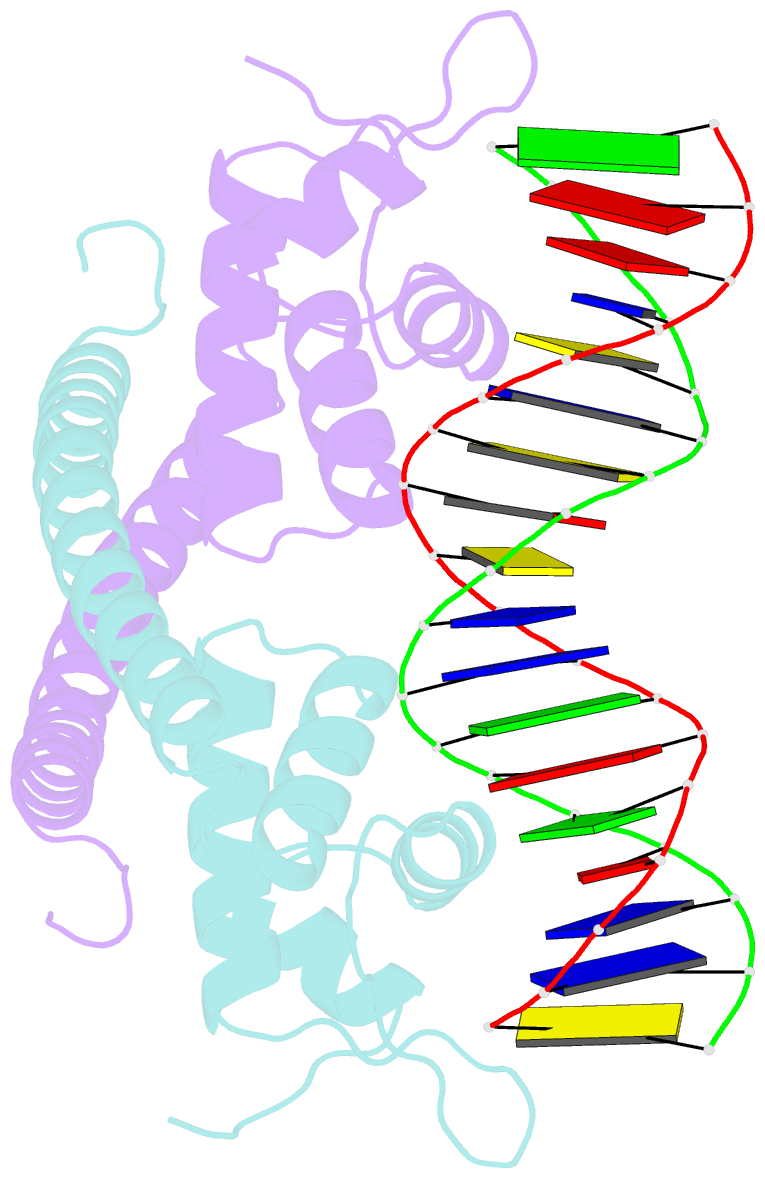Summary information and primary citation
- PDB-id
- 5d8c; SNAP-derived features in text and JSON formats;
DNAproDB
- Class
- transcription-DNA
- Method
- X-ray (2.25 Å)
- Summary
- Crystal structure of hinmlr, a merr family regulator lacking the sensor domain, bound to promoter DNA
- Reference
- Counago RM, Chen NH, Chang CW, Djoko KY, McEwan AG, Kobe B (2016): "Structural basis of thiol-based regulation of formaldehyde detoxification in H. influenzae by a MerR regulator with no sensor region." Nucleic Acids Res., 44, 6981-6993. doi: 10.1093/nar/gkw543.
- Abstract
- Pathogenic bacteria such as Haemophilus influenzae, a major cause of lower respiratory tract diseases, must cope with a range of electrophiles generated in the host or by endogenous metabolism. Formaldehyde is one such compound that can irreversibly damage proteins and DNA through alkylation and cross-linking and interfere with redox homeostasis. Its detoxification operates under the control of HiNmlR, a protein from the MerR family that lacks a specific sensor region and does not bind metal ions. We demonstrate that HiNmlR is a thiol-dependent transcription factor that modulates H. influenzae response to formaldehyde, with two cysteine residues (Cys54 and Cys71) identified to be important for its response against a formaldehyde challenge. We obtained crystal structures of HiNmlR in both the DNA-free and two DNA-bound forms, which suggest that HiNmlR enhances target gene transcription by twisting of operator DNA sequences in a two-gene operon containing overlapping promoters. Our work provides the first structural insights into the mechanism of action of MerR regulators that lack sensor regions.





